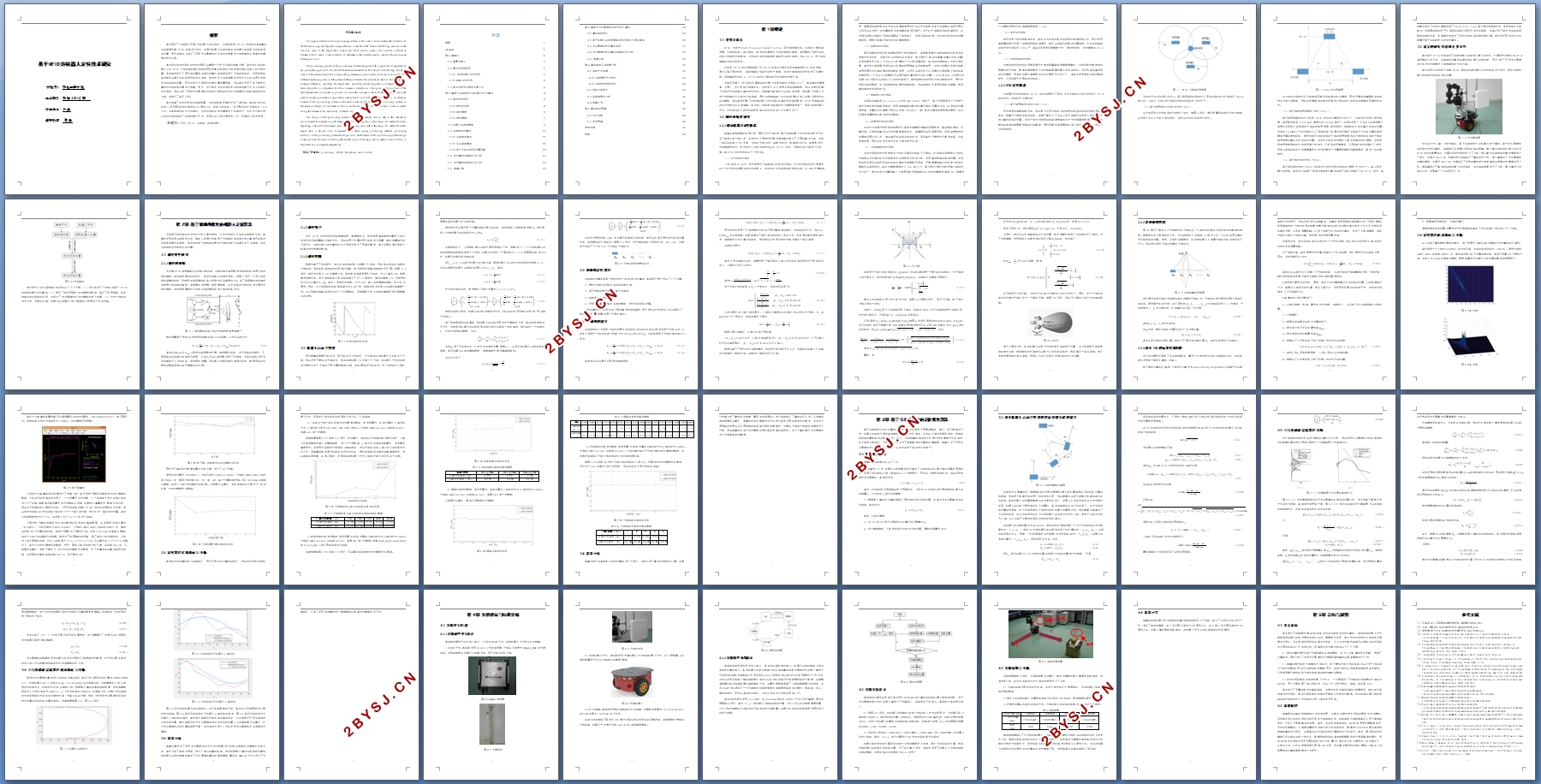基于RFID的机器人定位技术研究
无需注册登录,支付后按照提示操作即可获取该资料.
基于RFID的机器人定位技术研究(任务书,开题报告,外文翻译,论文16000字)
摘要
本文提出了一种室内环境下的机器人定位系统,该系统利用RFID技术和双曲线算法对超高频无源RFID标签进行定位,并通过机器人运动控制驱使机器人移动到目标标签所在位置,另外在理论上验证了采用卡尔曼滤波对多次定位结果进行信息融合以提高定位精度的技术方案。
本文设计的定位系统的定位过程可以看做一个优化问题的求解过程,首先由安装在机器人上的RFID天线在随机器人移动的同时收集标签到达天线的相位值以及相应的天线位置,再由其中两个不同天线位置间的相位差算出标签到这两个天线的距离差,进而利用距离差就可以画出目标标签所在的双曲线,然后将多个双曲线整合后求出它们的共同交点就是目标标签的位置,因为该优化过程是对全局位置求最优解,所以本文采用了粒子群优化算法对目标标签位置进行求解。另外,由于本文的定位系统是在移动机器人平台上的实时定位系统,所以分析了利用卡尔曼滤波对移动过程中的多次定位结果进行信息融合的技术方案,并验证了其可行性。
本文搭建了该定位系统的实验装置,并在实验室环境中评估了其性能。其在距离目标标签2米范围内的定位误差在30厘米左右,距离目标标签1米范围内的定位误差在10cm左右。与其他类似定位方法相比,该定位系统的定位精度处于较高水平,并且由于本文设计的定位系统结合了移动机器人平台,使得它的应用范围更加广泛,环境适应性也更强。
关键字:定位;RFID;双曲线;移动机器人
Abstract
This paper presents a robot positioning system in the indoor environment, the system uses RFID technology and hyperbola algorithm to locate the UHF Passive RFID tag, and drive the robot to move to the target label location by robot motion control, also verified in theory of Calman filter to multi location results of information fusion technique to improve the positioning scheme precision.
The positioning process of the positioning system designed in this paper can be regarded as an optimization process.First, the RFID antenna mounted on the robot collects the tag, the phase value of the antenna and the corresponding antenna position as the robot moves.From the two different antenna position of the phase difference between the calculated label to the two antenna distance difference, can draw the target label and then use the hyperbolic distance difference, then a hyperbolic integration for their common intersection is the goal of the position of the label.Because the optimization process is to find the optimal solution for the global position, the particle swarm optimization algorithm is adopted to solve the target tag location. In addition, because of this positioning system in the mobile robot platform real-time positioning system, so the analysis scheme of information fusion on the moving process of the multi location results using the Calman filter, and verify its feasibility
The design of the positioning system of the experimental device, and in the laboratory environment to evaluate its performance. The positioning error in the range of 2 meters from the target tag is about 30 centimeters, and the positioning error within the range of 1 meters from the target label is about 10cm. Compared with other similar positioning method, positioning accuracy of the positioning system at a high level, and because of this positioning system design combines with the mobile robot platform, the scope of the application makes it more widely, it has better environmental adaptability.
Key Words:positioning;RFID;hyperbola;mobile robot

目录
摘要 Ⅰ
Abstract Ⅱ
第1章绪论 1
1.1背景及意义 1
1.2国内外现状研究 1
1.2.1 移动机器人定位技术 1
1.2.2 RFID定位技术 3
1.3本文的研究内容和主要工作 6
第2章基于双曲线优化的机器人定位算法 8
2.1相位特性研究 8
2.1.1相位的获取 8
2.1.2相位噪声 9
2.1.3相位模糊 9
2.2机器人运动学模型 9
2.3双曲线定位算法 11
2.2.1双曲线的建立 11
2.2.2多双曲线模型 15
2.2.3基于PSO的标签位置求解 15
2.4 定位算法仿真验证与分析 17
2.5 定位算法实验验证与分析 19
2.6 本章小结 22
第3章基于卡尔曼滤波的定位优化算法 24
3.1算法架构设计 24
3.2基于机器人运动学模型的状态转移方程的建立 25
3.3卡尔曼滤波优化算法实现 27
3.4卡尔曼滤波优化算法仿真验证与分析 29
3.5 本章小结 30
第4章实验验证与结果分析 32
4.1实验平台搭建 32
4.1.1实验硬件平台设计 32
4.1.2实验软件系统设计 34
4.2实验方案设计 35
4.3实验结果与分析 36
4.4本章小节 37
第5章总结与展望 38
5.1全文总结 38
5.2未来展望 38
参考文献 39
致谢 41
